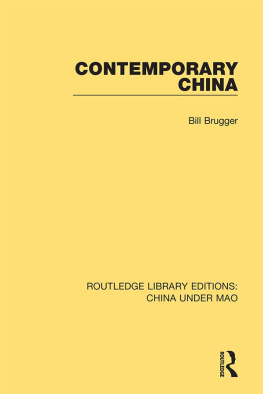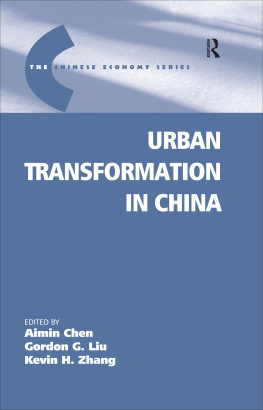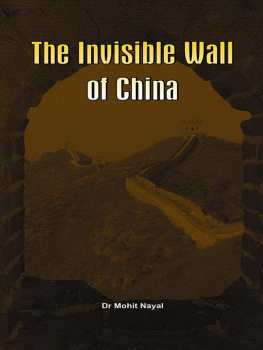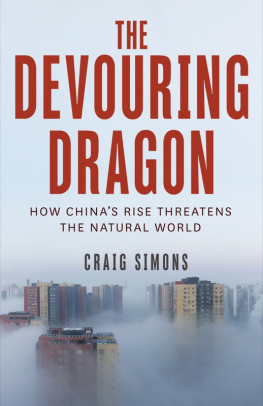Scott Rozelle - Invisible China: How the Urban-Rural Divide Threatens China’s Rise
Here you can read online Scott Rozelle - Invisible China: How the Urban-Rural Divide Threatens China’s Rise full text of the book (entire story) in english for free. Download pdf and epub, get meaning, cover and reviews about this ebook. year: 2020, publisher: University of Chicago Press, genre: Politics. Description of the work, (preface) as well as reviews are available. Best literature library LitArk.com created for fans of good reading and offers a wide selection of genres:
Romance novel
Science fiction
Adventure
Detective
Science
History
Home and family
Prose
Art
Politics
Computer
Non-fiction
Religion
Business
Children
Humor
Choose a favorite category and find really read worthwhile books. Enjoy immersion in the world of imagination, feel the emotions of the characters or learn something new for yourself, make an fascinating discovery.
- Book:Invisible China: How the Urban-Rural Divide Threatens China’s Rise
- Author:
- Publisher:University of Chicago Press
- Genre:
- Year:2020
- Rating:5 / 5
- Favourites:Add to favourites
- Your mark:
- 100
- 1
- 2
- 3
- 4
- 5
Invisible China: How the Urban-Rural Divide Threatens China’s Rise: summary, description and annotation
We offer to read an annotation, description, summary or preface (depends on what the author of the book "Invisible China: How the Urban-Rural Divide Threatens China’s Rise" wrote himself). If you haven't found the necessary information about the book — write in the comments, we will try to find it.
Scott Rozelle: author's other books
Who wrote Invisible China: How the Urban-Rural Divide Threatens China’s Rise? Find out the surname, the name of the author of the book and a list of all author's works by series.
Invisible China: How the Urban-Rural Divide Threatens China’s Rise — read online for free the complete book (whole text) full work
Below is the text of the book, divided by pages. System saving the place of the last page read, allows you to conveniently read the book "Invisible China: How the Urban-Rural Divide Threatens China’s Rise" online for free, without having to search again every time where you left off. Put a bookmark, and you can go to the page where you finished reading at any time.
Font size:
Interval:
Bookmark:
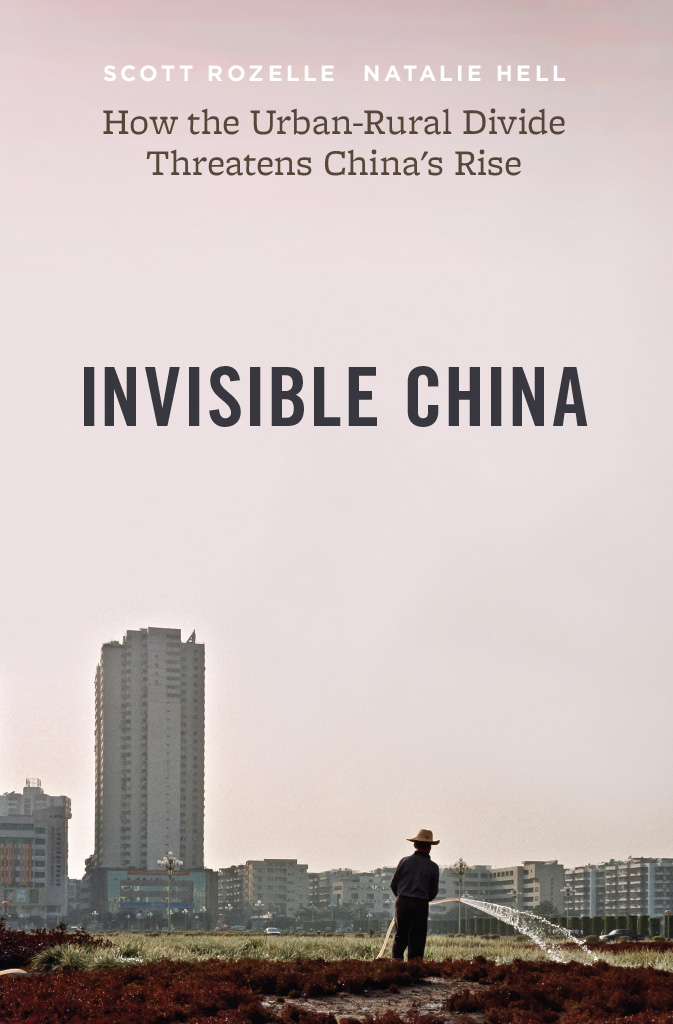
Scott Rozelle and Natalie Hell
The University of Chicago Press
Chicago and London
The University of Chicago Press, Chicago 60637
The University of Chicago Press, Ltd., London
2020 by Scott Rozelle and Natalie Hell
All rights reserved. No part of this book may be used or reproduced in any manner whatsoever without written permission, except in the case of brief quotations in critical articles and reviews. For more information, contact the University of Chicago Press, 1427 E. 60th St., Chicago, IL 60637.
Published 2020
Printed in the United States of America
29 28 27 26 25 24 23 22 21 20 1 2 3 4 5
ISBN-13: 978-0-226-73952-6 (cloth)
ISBN-13: 978-0-226-740515 (e-book)
DOI: https://doi.org/10.7208/chicago/9780226740515.001.0001
Library of Congress Cataloging-in-Publication Data
Names: Rozelle, Scott, author. | Hell, Natalie, 1991 author.
Title: Invisible China : how the urban-rural divide threatens Chinas rise / Scott Rozelle and Natalie Hell.
Description: Chicago ; London : The University of Chicago Press, 2020. | Includes bibliographical references and index.
Identifiers: LCCN 2020013172 | ISBN 9780226739526 (cloth) | ISBN 9780226740515 (ebook)
Subjects: LCSH: Economic developmentChina. | Rural-urban relationsChina. | Rural poorChina. | EqualityChina. | EducationChinaRegional disparities. | Rural poorHealthChina. | ChinaEconomic conditionsRegional disparities.
Classification: LCC HC427.95 R72 2020 | DDC 330.951dc23
LC record available at https://lccn.loc.gov/2020013172
 This paper meets the requirements of ANSI / NISO Z39.48-1992 (Permanence of Paper).
This paper meets the requirements of ANSI / NISO Z39.48-1992 (Permanence of Paper).
This book is different from most books about China intended for a Western audience. It is not another sensationalist account that criticizes everything about China. It is not written by a journalist or a businessman with a big idea but limited direct knowledge of the country. Instead, it is the product of decades of firsthand research. Not only that, it is written in the spirit of hopehope that China will find solutions to its current problems. I hope I can convince you, the reader, that it is in everyones interest for China to do so.
Chinas rise is one of the most dramatic stories of the twentieth century. Most Western observers see a rising China as an inevitable threat to Western dominance. But Chinas continuing rise is far from inevitable. There are still some very important steps that must be taken and high hurdles that must be cleared if China is to finish the arc of its stunning growth. And in our interconnected world, it is in the interests of us all that China stay the course. The health of the global economy, and the global political system, likely depends on it.
The path that brought me here has been a long but rich one. When I first traveled to China in 1983, I fell in love with the country, especially with its rural people. Since that first visit, I have conducted thousands of interviews with rural people from all walks of lifefarmers, entrepreneurs, migrant workers, doctors, teachers, and the elderly. My collaborators and I have visited thousands of schools and collected survey data from millions of students across China. And after decades of careful research, I have uncovered a challenge that, if not addressed, threatens to derail the Chinese dream.
Its not too late for China to take action. In fact, over the past few decades, the Chinese government has had a remarkable record of addressing big economic challenges, even problems that most observers thought were insoluble. However, the challenges I highlight in this book have remained invisible for far too long, not only to the outside world but also to many Chinese. One of the keys to taking action is to know there is a problem. Clarifying those challenges, I hope, will be one of this books primary contributions. And I hope that Chinas government will act decisively in addressing the challengesas it has addressed so many others.
Today China and the world are facing a new challenge in the form of the 2020 coronavirus pandemic. This problem did not exist when I wrote this book. If anything, I fear this books message may be even more urgent in light of this new global crisis. While no one can predict what is going to happen in the coming months and years, there are unparalleled stresses on Chinas economy today. For the first time in forty years, China experienced negative growth rates and high formal unemployment rates in the first quarter of 2020. In the rural economy, several months after the pandemic stay-home orders were relaxed, survey results show less than half of Chinas rural labor force is back to work. Meanwhile, there is widespread talk within China of the need to deglobalize. Internationally, economic downturns in Chinas major trading partners, in addition to the potential political turn against global interconnection, may further accelerate Chinas looming labor transition. Some are hoping China will be the bulwark that can right the global economy and prevent further disaster. Instead, I fear there is a real chance that COVID-19 could be the trip wire that exposes the underlying human capital crisis I lay out in this book and sets in motion forces that divert China from its current economic path, with potentially grave effects for Chinas trading and diplomatic partners around the globe.
The course of the next several decadesfor all of usdepends on what happens in China today.
Two final points: First, a note on naming. We adhere to Chinese naming conventions (surname followed by first name) throughout. Some names in individual stories have been changed to protect the anonymity of our sources. Second, this book is the result of a collaboration between two coauthors, but for the sake of simplicity it is written in my voice.
Scott Rozelle
May 24, 2020
Whenever I bring students, colleagues, or prospective donors to rural China for the first time, I ask the same question. I pull a hundred-yuan bill from my pocket and hold it up. You see this? I say, looking around theatrically. Whoever can find a working-age man in this village gets one hundred yuan. He has to be between eighteen and forty, and he has to be healthy. Everyone laughs, thinking one of them is about to make some easy money. But every time, as we go around the village, no young men appear. By days end, I always win my bet.
This little game illustrates a broader point. Chinas rapid economic rise was brought about by an enormous expansion of jobs in the cities. Given that the majority of Chinas population is from rural villages, this has meant a massive rural-to-urban migration over the past several decades. Numbering at least 350 million people, this may be the largest peacetime migration in history.
Viewed from a poor rural village, then, Chinas economic fortune can most easily be read by observing who is not there. When times are good, as theyve been for the past several decades, the young and able-bodied are off working in the cities and sending their paychecks home to support their families. Its this work (in factories, on construction sites, or in the growing service sector) that allowed hundreds of millions of people who were once restricted to subsistence farming, threatened with starvation every bad-weather season, to escape poverty and live newly stable lives. This trendthe out-migration of every able-bodied young man, as well as most young womenwas so persistent that for years and years I never lost my bet.
Next pageFont size:
Interval:
Bookmark:
Similar books «Invisible China: How the Urban-Rural Divide Threatens China’s Rise»
Look at similar books to Invisible China: How the Urban-Rural Divide Threatens China’s Rise. We have selected literature similar in name and meaning in the hope of providing readers with more options to find new, interesting, not yet read works.
Discussion, reviews of the book Invisible China: How the Urban-Rural Divide Threatens China’s Rise and just readers' own opinions. Leave your comments, write what you think about the work, its meaning or the main characters. Specify what exactly you liked and what you didn't like, and why you think so.



